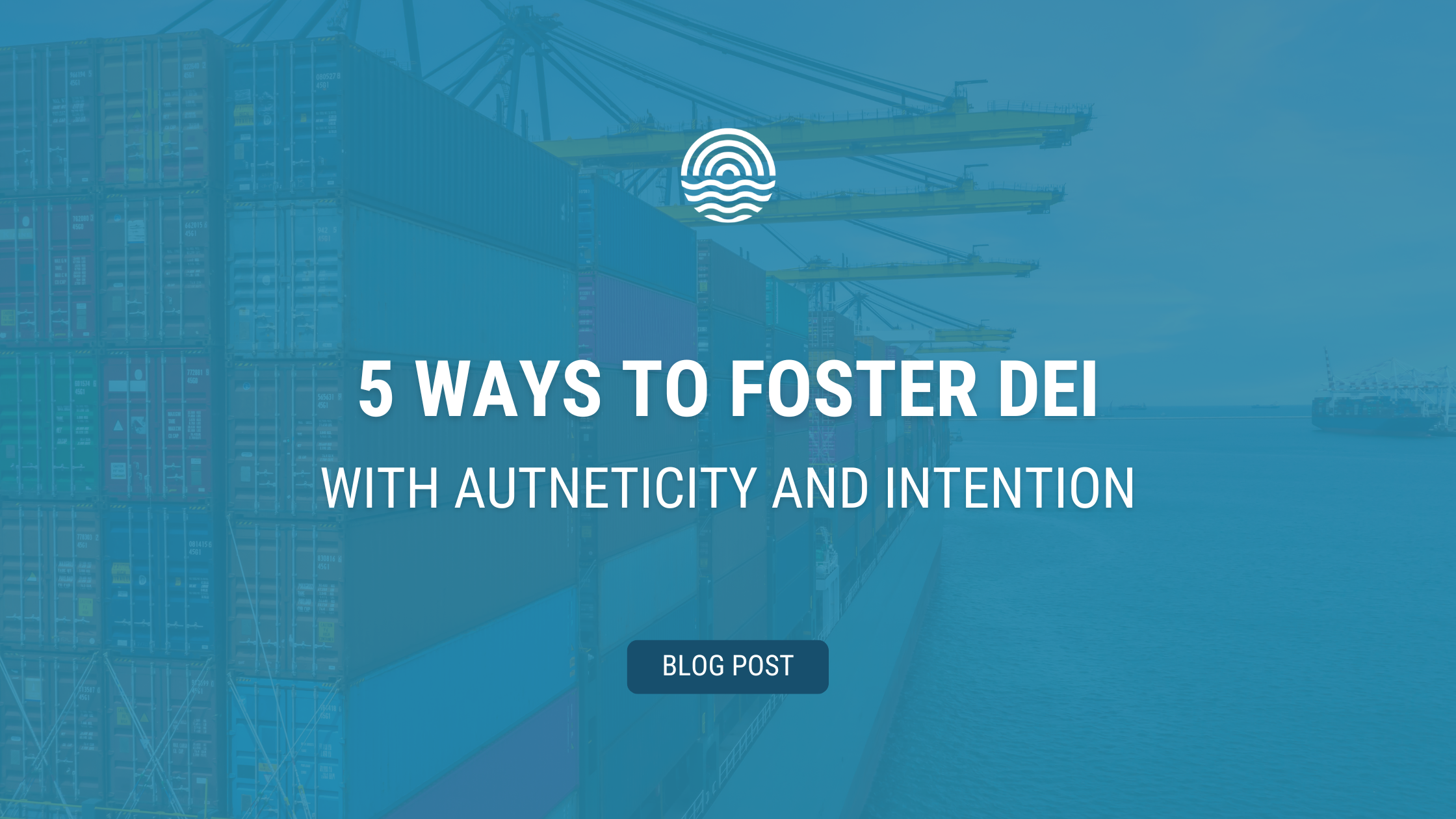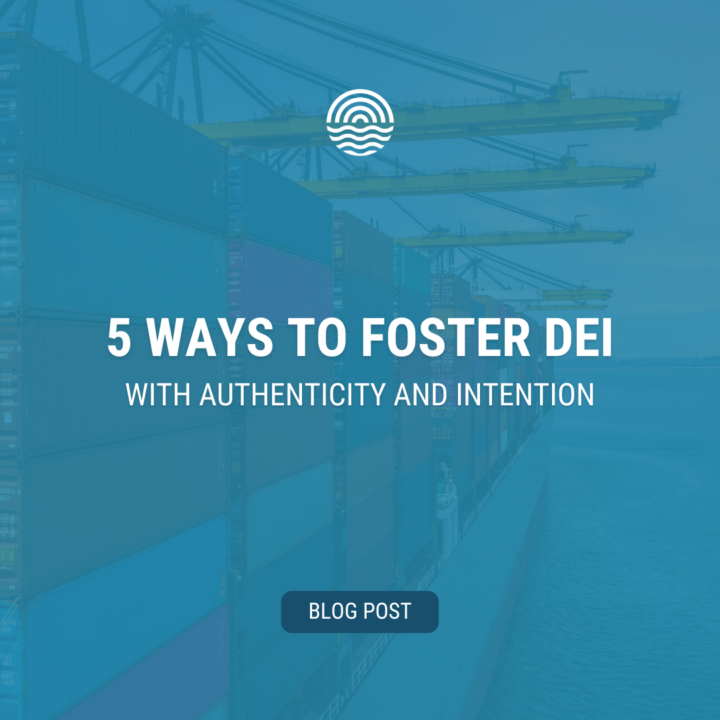
BLOG POST
5 Ways to Foster DEI with Authenticity and Intention
Building a truly inclusive workplace involves intentional action.
To be authentic, DEI must be lived and practiced by everyone. It should be a normal and organic part of how your workplace functions, in every department at every level.
Fostering DEI is about creating an environment where every individual feels valued, respected, and empowered to contribute their unique perspective. It means challenging the status quo, fostering open dialogue, and ensuring that DEI principles are reflected in decision-making, policies, and practices.
Simply having a DEI statement or a diversity committee isn’t enough.
True progress comes from embedding DEI into the core values of the organization. It involves creating opportunities for marginalized groups, addressing systemic biases, and measuring outcomes to ensure equitable experiences for all employees.
In this blog, we explore five foundational steps to help you cultivate a more diverse, equitable, and inclusive workplace.
1. Leadership Commitment & Accountability
Strong leadership buy-in is the cornerstone of any successful DEI initiative. DEI initiatives thrive when championed from the top down. This can involve:
- Setting clear expectations: Establishing a well-defined DEI mission, goals, and action plans ensures alignment throughout the organization. Clearly communicating these expectations to employees fosters shared understanding and buy-in.
- Leading by example: Leaders should model the inclusive behaviors they expect from their teams. This includes actively listening to diverse perspectives, valuing differences, and creating opportunities for all employees to contribute and thrive. Holding oneself accountable for fostering a welcoming environment builds trust and credibility.
- Allocating resources: Allocating adequate financial resources, time, and personnel demonstrates the organization’s commitment to DEI. Providing the necessary support empowers employees to drive DEI initiatives forward and achieve meaningful results.
2. Continuous Education & Awareness
Knowledge is power when it comes to fostering DEI. A culture of learning and growth is essential for progress. Invest in DEI training and education for all employees. This might look like:
- Unconscious bias training: Help employees recognize and challenge their own biases to reduce prejudice, increase awareness, and foster a culture of inclusivity.
- Cultural competency workshops: Enhance understanding of different cultures, experiences, and perspectives, and how they contribute to the workplace.
- Mentorship programs: Mentorship programs offer invaluable opportunities for employees to learn from diverse leaders. By pairing employees with experienced mentors from different backgrounds, organizations can expand perspectives, accelerate development, and build genuine connections between team members.
3. Data-Driven Decisions
Data-informed decisions are key for implementing and executing effective DEI strategies. To accurately measure progress and identify areas for improvement, use data to inform your DEI strategy. This can look like:
- Collecting employee demographics: Gaining a clear understanding of your workforce’s composition across various dimensions (e.g., race, ethnicity, gender, age, disability status, sexual orientation, and other relevant factors) is crucial for identifying potential disparities and tailoring DEI initiatives effectively.
- Tracking recruitment and promotion data: Examining hiring and advancement patterns helps uncover biases and inequalities that may be hindering the progress of underrepresented groups. By looking at data on applicant pools, hire rates, time-to-promotion, and leadership representation, you can identify areas for improvement and implement targeted interventions.
- Employee satisfaction surveys: Gathering feedback on employee experiences, perceptions of inclusivity, and overall job satisfaction provides valuable insights into the workplace culture.
4. Celebrate Differences
Embrace diversity as a strength and create a workplace where everyone feels valued. This might involve:
- Employee resource groups (ERGs): Providing support and resources to employee-led affinity groups fosters a sense of belonging, community, and professional development for employees with shared identities. ERGs can serve as powerful platforms for driving DEI initiatives and creating a more inclusive workplace.
- Hold inclusive events and celebrations: Organizing events that showcase different cultures, traditions, and perspectives creates opportunities for employees to learn, connect, and build relationships. By celebrating diversity, organizations demonstrate their commitment to inclusivity and foster a sense of belonging for all employees.
- Employee recognition programs: Implementing employee recognition programs that highlight the achievements and contributions of diverse employees reinforces the organization’s commitment to equity and inclusion. Publicly acknowledging the impact of diverse perspectives and experiences inspires others and creates a positive and motivating work environment!
5. Reimagine Recruitment & Retention
Ensure your hiring and retention practices are equitable. Build a talent pipeline that reflects your community. Keep these points in mind when evaluating your recruitment and retention practices with a DEI lens:
- Expanding talent pools through inclusive recruitment strategies: Actively seeking candidates from diverse backgrounds and communities helps build a more representative workforce. Tip: try leveraging a variety of recruitment channels, partnering with diversity-focused organizations, and/or implementing inclusive sourcing practices.
- Eliminating bias through inclusive job descriptions: Posting job ads that don’t use gendered/stereotypical language can help mitigate unconscious bias in the hiring process. Using inclusive language also encourages candidates from diverse backgrounds to apply for roles that might traditionally favour one gender over another.
- Fair compensation and benefits: Committing to pay equity and offering comprehensive benefits packages that meet the diverse needs of employees demonstrates your organization’s value for everyone.
- Employee well-being: Prioritize mental health and work-life balance for all employees. Supporting employees through flexible work arrangements, wellness programs, and resources demonstrates your commitment to creating a healthier, more productive workplace for everyone.
Foster DEI with Authenticity & Intention
Remember, building a truly inclusive workplace is a journey, not a destination. It requires ongoing commitment, evaluation, and adaptation.
Ultimately, a culture of DEI is one where everyone feels a sense of belonging, where differences are celebrated, and where everyone has the opportunity to reach their full potential.
By keeping these tips in mind, you will be well on your way to fostering DEI in a way that’s authentic to your unique workplace culture!
Questions about fostering DEI in your workplace? We’re here to help!


